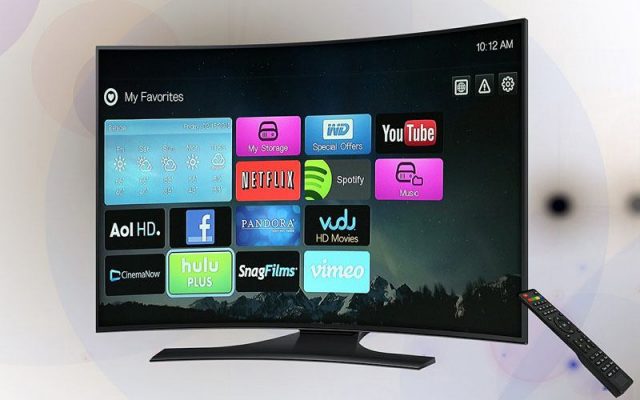When you are up for buying an HD or Ultra HD television, sellers will emphasize on some terms such as 4K, UHD, 2060p, HDMI 2.0, HDCP, Smart TV, 3D TV, HDTV, DTV, DLP, TV resolution, color depth, 16 million colors, 16 bit color and so on. If you go to buy a TV without having a good idea about these terms, you may end up making a poor purchase decision. So, let us have a brief look at each of these television terminologies.
4K vs UHD TV vs 2160p
UHD stands for ultra-high definition. UHD resolution is 3840×2160 pixels. 4K, UHD, and 2160p are used interchangeably by most people. Even though we have used 4K and UHD interchangeably in our posts, but strictly speaking there is a difference between 4K and UHD TV that might interest you.
HDMI 2.0
HDMI 2.0 has a significant increase in bandwidth. HDMI 2.0 features 18Gbps bandwidth and supports 4K resolutions.
HDCP
HDCP stands for High-bandwidth Digital Content Protection. If your HD TV is not HDCP licensed then you might see no signal on your TV screen after connecting a Blu-ray drive via HDMI cable to play a Blu-ray movie. For more information read this. Ensure that your TV is HDCP licensed. Most recent HDCP is 2.3.
HDMI ARC
ARC stands for Audio Return Channel. It was introduced with HDMI 1.4 standard. The ARC is essentially a protocol. This protocol offers two-way communication between devices over a single HDMI connection. HDMI ARC port allows an HDMI port to act as both an input and an audio output.
HDR
HDR stands for High Dynamic Range which deals with the contrast, and the relationship between light and dark, and color. HDR offers a wider range of colors. HDR brings more realism and depth to overall picture quality. Present HDR standard is HDR10+.
UHD upscaling
A UHD TV has to perform upscaling to present lower resolution material. Upscaling increases the pixel count of lower-resolution content, allowing a picture meant for lower resolution screen to fit the UHD screen.
3D TV
3D TVs are capable of projecting videos into a three-dimensional field. A 3D TV could have 720p or 1080p resolution. When watching 2D material on a 3D TV, you will get the same high-definition picture you would get with a non-3D model.
Smart TV
Smart TV is a regular TV with a fancy menu and features additional abilities such as browsing the internet, using internet apps, connecting your smartphones and watch the contents of your smartphone on TV and so on.
Differences between 480p, 720p, 1080p, and 1080i
1080p is the best resolution among all the other. ‘p’ stands for progressive scan, and ‘i’ stands for interlaced. While 1080i can give more details, but as it is interlaced, so, during fast-moving scenes the picture quality may degrade significantly. So, 1080p can provide the best possible picture. 480i had 640×480 pixels, 720p has 1280×720 pixels at 60 frames per second, 1080i has 1920×1080 pixels at 30 frames per second, and 1080p has 1920×1080 pixels at 60 frames per second. The last one is referred to as Full HD.
Full HD
A full HD TV should have 1080p resolution with 1920×1080 pixels.
Color Depth
There are three basic colors Red, Green, and Blue. New TVs has 8 bit for each of these three colors. In total, the TV should provide 24 bit (2 to the power 24) color, in other words, 16.8 million colors. Whereas, 16 bit (2 to the power 16) color means 65,536 colors. So, if your TV is, for instance, 32-bit, you will get an even better depth of colors.
Contrast Ratio
The more contrast ratio means a deeper black and better overall color performance of your television. Native Contrast Ratio is preferable over Dynamic Contrast.
DTV
DTV stands for Digital TV.
DLP TV
TVs that use Digital Light Processing.
HD Ready
It means the TV does not have a built-in HD tuner, but it will produce a high definition picture if you connect an HD cable box or an HD satellite receiver to it.
SDTV
SDTV stands for Standard Definition Television. The resolution supported on these televisions is 480p. Regular TV programs are broadcasted at this resolution at the user end.
HDTV
High definition TV. HDTV has a built-in HD tuner. It produces more color depth and better picture quality. However, having an HDTV does not ensure that you will get a better picture when watching programs from your Cable TV network or Satellite channels. High definition video will only be available when satellite channels broadcast high definition TV shows. In case, your satellite channels broadcast low-resolution pictures, then HDTV will optimize the video to its best.
HDMI
HDMI stands for High Definition Multimedia Interface. It means your TV supports HDMI cable to connect with a cable box. It helps optimizing poor resolution programs.
Difference between LCD and LED TV
Both are LCD TVs because of both types of TV use the same Liquid Crystal Display. The difference is: LCD TV has fluorescent lamps at the back of its screen, while LED has Light Emitting Diodes. LED lights are smaller in size, so LED TVs are thinner than LCD TVs.
LED TV consumes less power than LCD TVs. LED TV is capable of producing slightly (in most cases indistinguishable by naked eyes) better black and more contrast than LCD TVs.
However, LED TVs sometimes suffer Burn-in effect. For instance, if a video game has HUD or heads-up display elements, the gamer may see ghostly images of it on the screen when played for a long time. This sort of burn-in effect is less likely to occur in LCD panels. So, if you are a hardcore gamer then LCD TV will be a better choice for you. However, LED TV’s minor Burn-in glitch may be solved by the time you read this article.
